预约演示
更新于:2025-06-21
Leukotriene B4
白三烯B4
更新于:2025-06-21
概要
基本信息
原研机构 |
在研机构- |
非在研机构 |
权益机构- |
最高研发阶段终止临床2期 |
首次获批日期- |
最高研发阶段(中国)- |
特殊审评- |
登录后查看时间轴
结构/序列
分子式C20H32O4 |
InChIKeyVNYSSYRCGWBHLG-AMOLWHMGSA-N |
CAS号71160-24-2 |
关联
2
项与 白三烯B4 相关的临床试验NCT03192280
Skin IaM: An Exploratory Clinical Trial to Evaluate Changes in Skin Appearance, Colour, and/or Texture Following the Induction of a Local Inflammatory Skin Response
This trial will test the feasibility of various imaging devices to detect local skin inflammation prior to clinical manifestation.
开始日期2017-06-19 |
申办/合作机构 |
NCT00251537
A Pilot Study Assessing Safety and Antiretroviral Activity of Intravenously Administered LTB4 in HIV-1 Infected Adults With a CD4 Count Greater Than 250 Cells/mm3 and a Viral Load Greater Than 5,000 Copies/mL, and Who Have Not Received Antiretroviral Therapy Within Two Months
This is a pilot study to assess the safety and antiretroviral activity of a naturally occuring substance known as Leukotriene B4(LTB4). The aim of the study is to determine the effect of LTB4 on viral load during a period of 6 weeks, 4 weeks of active treatment and 2 additional weeks after the end of active treatment for safety follow-up. 40 patients in seven clinics in Canada will be randomized into three treatment arms, either of two doses of LTB4 or placebo. Study drug is administered intravenously once daily. LTB4 can activate and stimulate various white blood cells and by the activation release natural substances in the body and this process is an important part of the body's defense against infections.
开始日期2005-11-01 |
申办/合作机构 |
100 项与 白三烯B4 相关的临床结果
登录后查看更多信息
100 项与 白三烯B4 相关的转化医学
登录后查看更多信息
100 项与 白三烯B4 相关的专利(医药)
登录后查看更多信息
8,258
项与 白三烯B4 相关的文献(医药)2025-09-01·JOURNAL OF PHARMACEUTICAL AND BIOMEDICAL ANALYSIS
Intervention study of Yanghe decoction on plasma cell mastitis based on mammary microecology and metabolomics investigation
Article
作者: Ma, Feixia ; Zhang, Shuo ; Xiao, Yi ; Qian, Luyao
Plasma cell mastitis (PCM), a chronic breast inflammatory disease, is characterized by ductal dilatation and plasma cell infiltration. Traditional Chinese Medicine (TCM) Yanghe decoction is used to relieve mastitis symptoms clinically. However, its efficacy and mechanism on PCM remain undefined. The PCM patients receiving dexamethasone and metronidazole tablets, served as control group, with the other group receiving combination of Yanghe decoction, 15 cases each. Main symptom indicators included mass size, skin colour, skin temperature, breast pain, blood cell count (WBC), C reactive protein (CRP), interleukin (IL)-6, IL-4, serum prolactin (PRL), erythrocyte sedimentation rate (ESR), immunoglobulin A (IgA), IgM, and IgG levels. Secondary indicators included TCM syndrome and anxiety/depression scores. Breast differential flora (DF) and metabolites (DAMs) post-treatment between two groups were detected by 16S rRNA sequencing and metabolomics, with further correlation analysis. Post-treatment symptom scores exhibited lower than pre-treatment in both groups, with greater decline on WBC, CRP, IL-6, IL-4, PRL, and ESR, and enhanced IgA, IgM, and IgG levels in Yanghe decoction group than in control group. Notably, Yanghe decoction group demonstrated no significant DF, with decreased Corynebacterium and Rhodococcus, and elevated Staphylococcus, which correlated significantly with the above indicators. Moreover, 43 DAMs were detected between these two groups, with Glycerophosphocholine, 9,10-Epoxyoctadecenoic acid, Arachidic acid, and 4,5-Dihydroorotic acid showing strong correlations with the above flora. Based on the clarification of PCM improvement with Yanghe decoction, we preliminarily explored potential roles of breast tissue microorganisms and DAMs, providing scientific basis for its clinical application and potential clinical biomarkers in PCM.
2025-07-01·BIOMEDICAL CHROMATOGRAPHY
Study on the Efficacy and Mechanism of Metabolomics and Bioinformatics on the Treatment of Qi Stagnation and Blood Stasis Coronary Heart Disease by Danshen Injection
Article
作者: Liu, Rihui ; Liu, Tao ; Xiang, Yuyang ; Wu, Lei ; Feng, Mei ; Peng, You
ABSTRACT:
This study, grounded in traditional Chinese medicine theory, established a QZXY‐CHD model to investigate DSI's impact on vascular endothelial function, inflammatory factors, oxidative stress, and myocardial energy metabolism from a holistic perspective. The results demonstrated that DSI significantly reduced serum levels of ET‐1, MPO, IL‐1β, TNF‐α, MDA, LDH, and CK‐MB, while increasing NO and SOD levels, indicating DSI's ability to inhibit inflammation, mitigate oxidative stress, and protect endothelial and organ functions. Using bioinformatics, we identified differentially expressed genes and metabolic pathways in coronary heart disease and screened diagnostic biomarkers (JDP2, ZFP36, TRAF3IP3, MRPS30, CLEC4D). Non‐targeted metabolomics revealed changes in endogenous metabolites, identifying 73 differential metabolites between the control (Con) and model (Mod) groups, and 75 between the Mod and DSI groups, with 21 key overlapping metabolites. Integrated bioinformatics and metabolomics analysis highlighted critical metabolites such as arachidonic acid, leukotriene B4, linoleic acid, sucrose, D‐glucose, pyroglutamic acid, and palmitic acid, as well as seven key metabolic pathways including arachidonic acid metabolism, linoleic acid metabolism, and galactose metabolism. This combined analysis provides biological evidence for identifying biomarkers of CHD host susceptibility and elucidates the mechanisms by which DSI ameliorates QZXY‐CHD, offering new insights for diagnosis and disease management.
2025-06-01·EUROPEAN JOURNAL OF PHARMACOLOGY
Anti-inflammatory and anti-oxidant potential of dispiro-indanedione hybrid of parthenin via regulating Nrf2 and NF-κB/MAPK pathways
Article
作者: Andrabi, Nusrit Iqbal ; Saroch, Diksha ; Shukla, Sanket K ; Ahmed, Zabeer ; Kour, Gurleen ; Ahmed, Manzoor ; Bharitkar, Yogesh P ; Madishetti, Sreedhar ; Kumar, Diljeet ; Singh, Chetan Paul ; Bhagat, Asha
Steroidal and non-steroidal anti-inflammatory drugs are widely used for treating a spectrum of inflammatory conditions; however, their systemic adverse effects hinder their usage. Therefore, alternate therapeutic strategies are required to treat inflammatory disorders. Parthenin, a lactone derived from Parthenium hysterophorus, has demonstrated anti-inflammatory activity; however, its toxic nature limits its application. We proposed modifications of parthenin to enhance its efficacy while reducing toxicity. In this context, we screened parthenin derivatives for anti-inflammatory efficacy and identified dispiro-indanedione hybrid of parthenin (DIHP) as a potent anti-inflammatory agent. Macrophages were pre-treated with DIHP followed by LPS stimulation to evaluate the in-vitro anti-inflammatory and anti-oxidant activity. We assessed in-vivo anti-inflammatory effect of DIHP in carrageenan-induced paw edema and LPS-induced sepsis model. Our findings showed that DIHP exerts negligible effect on cell viability, effectively attenuates the production of inflammatory markers (NO, TNF-α, IL-6 &IL-1β) and down-regulates NF-κB, MAPK pathways in in-vitro and in-vivo system. Additionally, DIHP inhibited LPS-induced generation of prostaglandin E2, leukotriene B4, ROS and upregulated the expression of superoxide dismutase, catalase, nuclear factor-E2-related factor 2 and peroxisome proliferator-activated receptor gamma. Furthermore, DIHP effectively reduced carrageenan-induced paw edema and curtailed the levels of liver, and kidney damage markers (AST, ALT, CRE, and BUN), protected the lung, liver and kidney against pathological damage and enhanced the survival rate in LPS-challenged mice. DIHP demonstrated comparable efficacy to dexamethasone in reducing inflammatory markers. In conclusion, our study strongly suggests that DIHP curtailed inflammation and oxidative stress by down regulating NF-κB and MAPK pathways and enhanced anti-oxidant response.
19
项与 白三烯B4 相关的新闻(医药)2025-03-10
·今日头条
点击蓝字
关注我们
【导读】
白三烯A4水解酶(LTA4H)是一种炎症介质,因其在慢性肺部疾病和各种癌症的发展中的作用而备受关注。这项研究强调了LTA4H在肝细胞癌(HCC)发生和发展中的保护作用。
2025年3月7日,复旦大学附属肿瘤医院王红阳院士的研究团队在期刊《Cell Reports Medicine》上发表了题为“LTA4H improves the tumor microenvironment and prevents HCC progression via targeting the HNRNPA1/LTBP1/TGF-β axis”的研究论文。
https://www.cell.com/cell-reports-medicine/fulltext/S2666-3791(25)00073-4
研究结果揭示了LTA4H在调节肿瘤微环境中的作用,并为LTA4H缺失型HCC患者的潜在诊断和治疗策略提供了启示。
01 研究背景
白三烯A4水解酶(LTA4H)是一种多功能锌金属酶,具有环氧化物水解酶和氨肽酶活性。它催化白三烯A4(LTA4)转化为白三烯B4(LTB4),后者是一种通过白三烯B4受体1(BLT1)和白三烯B4受体2(BLT2)发挥作用的强效炎症介质。LTA4H在食管癌、皮肤癌、卵巢癌和结直肠癌等多种恶性肿瘤中高度表达,并通过促进细胞增殖来推动肿瘤进展。
02
阻断TGF-β可增强LTA4H KO肿瘤小鼠的抗PD-1疗效
在接受抗-PD-1疗法或联合疗法的Hepa1-6混杂肿瘤中观察到肿瘤明显缩小,但LTA4H KO肿瘤对抗-PD-1单一疗法表现出耐药性。与IgG或单一疗法相比,联合疗法明显限制了LTA4H KO肿瘤的生长。mIHC分析显示,抗-PD-1单药治疗未能诱导LTA4H KO肿瘤中的GZMBCD8 T细胞和CD8 T细胞浸润,这可能是由于CD206巨噬细胞的大量存在。抗-TGF-β能减少CD206巨噬细胞,但只有联合疗法能同时有效地减少PD-1CD8 T细胞的比例、增加GZMBCD8 T细胞的比例并促进CD8 T细胞在LTA4H KO肿瘤中的浸润。这就解释了抗TGF-β单药疗法在LTA4H KO模型中的有限疗效,
这可能是由于在治疗前已经存在的免疫抑制微环境导致CD8 T细胞耗竭所致。
为了研究这一发现是否可以推广到临床HCC,研究人员分析了接受ICIs治疗的HCC患者肿瘤细胞中LTA4H水平与治疗反应之间的相关性。与非应答者相比,应答者的LTA4H水平明显更高,CD206巨噬细胞数量更少。
这些发现表明LTA4H是指导HCC ICI治疗的潜在生物标志物。
在LTA4H基因敲除肿瘤小鼠中阻断TGF-β,可增强抗PD-1疗法的疗效。
03 总结
1. LTA4H在肿瘤微环境(TME)中的作用:
LTA4H在重塑TME中的作用尚未充分探索,但最新研究发现其可能通过CCL5促进免疫抑制性TME;
在肝细胞癌(HCC)中,LTA4H的消融与HCC发生和免疫治疗反应相关,且加剧肝损伤,促进M2样巨噬细胞浸润。
2. LTA4H通过核机制调节LTBP1和TGF-β:
LTA4H通过与HNRNPA1相互作用,调节LTBP1的表达和TGF-β的分泌与激活;
LTB4诱导的HNRNPA1磷酸化破坏了HNRNPA1与LTBP1 mRNA的结合,抑制LTBP1 mRNA的加工;
高度激活的TGF-β信号导致HCC中TME耗竭和PD-1阻断反应差。
3. TGF-β阻断的潜在治疗价值:
TGF-β阻断可逆转LTA4H缺陷型肿瘤的免疫抑制,增强免疫检查点抑制剂(ICI)的疗效;
临床试验和小鼠模型研究表明,TGF-β抑制剂(如galunisertib)与ICI联合治疗可触发强大的抗肿瘤免疫反应和肿瘤消退。
4. LTA4H作为免疫治疗反应的生物标志物:
研究发现,对ICI无反应的患者中LTA4H表达显著降低,表明LTA4H可能是ICI反应的预测生物标志物。
5. LTA4H失调的关键因素:
HCC中LTA4H失调的关键因素包括乙酰辅酶A水平降低和HDAC1表达升高,导致LTA4H启动子处组蛋白乙酰化受损;
LTA4H的核易位依赖于HNRNPA1,其核功能和机制需要进一步研究。
参考资料:
1.Singal, A.G. ∙ Kanwal, F. ∙ Llovet, J.M.
Global trends in hepatocellular carcinoma epidemiology: implications for screening, prevention and therapy
Nat. Rev. Clin. Oncol. 2023; 20:864-884
2.Llovet, J.M. ∙ Pinyol, R. ∙ Yarchoan, M. ...
Adjuvant and neoadjuvant immunotherapies in hepatocellular carcinoma
Nat. Rev. Clin. Oncol. 2024; 21:294-311
【关于投稿】
转化医学网(360zhyx.com)是转化医学核心门户,旨在推动基础研究、临床诊疗和产业的发展,核心内容涵盖组学、检验、免疫、肿瘤、心血管、糖尿病等。如您有最新的研究内容发表,欢迎联系我们进行免费报道(公众号菜单栏-在线客服联系),我们的理念:内容创造价值,转化铸就未来!
转化医学网(360zhyx.com)发布的文章旨在介绍前沿医学研究进展,不能作为治疗方案使用;如需获得健康指导,请至正规医院就诊。
责任声明:本稿件如有错误之处,敬请联系转化医学网客服进行修改事宜!
微信号:zhuanhuayixue
热门推荐活动 点击免费报名
🕓 全国|2024年12月-2025年03月
▶ 中国转化医学产业大会
🕓 上海|2025年6月12-15日
▶ 第七届上海国际癌症大会暨中国生物工程学会医学生物技术专业委员会年会暨第六届中德双边论坛
点击对应文字 查看详情
免疫疗法临床研究
2025-03-08
·生物世界
撰文丨王聪
编辑丨王多鱼
排版丨水成文
肝细胞癌(HCC)是最常见的原发性肝癌,是全球第六大常见的癌症和第三大癌症相关死亡原因。许多患者确诊时已处于晚期,限制了根治性疗法的选择,导致预后不良,其特点是 5 年生存率低,手术后频繁复发。
肝细胞癌的固有异质性进一步复杂化了治疗策略。病毒性肝炎、酒精相关性肝病和非酒精性脂肪性肝病等因素导致的慢性肝损伤和炎症是肝细胞癌发病机制的基础,炎症介质严重影响肿瘤微环境(TME)并驱动肝细胞癌的进展。
2025年3月7日,复旦大学附属肿瘤医院/上海东方肝胆外科医院/国家肝癌科学中心王红阳院士、陈磊研究员等在 Cell 子刊 Cell Reports Medicine 上发表了题为:LTA4H improves the tumor microenvironment and prevents HCC progression via targeting the HNRNPA1/LTBP1/TGF-β axis 的研究论文。
该研究表明,LTA4H 通过靶向 HNRNPA1/LTBP1/TGF-β 信号轴,改善肿瘤微环境并阻止肝细胞癌(HCC)进展。
了解肿瘤微环境(TME)内的免疫逃逸机制对于改善肝细胞癌的免疫治疗效果至关重要。肿瘤相关巨噬细胞(TAM)在肝细胞癌中数量众多,通常呈现 M2 样巨噬细胞表型,是潜在的治疗靶点。TGF-β 和 CCL2 等趋化因子对于 TAM 的募集和功能重塑至关重要。通过趋化因子信号重编程 TAM 可能与免疫检查点抑制剂(ICI)产生协同作用,不过仍需进一步研究以优化组合并确定用于患者分层的预测性生物标志物。
有效的预测性生物标志物对于解决肝细胞癌患者反应的异质性至关重要。有研究证据表明,RNA 测序数据能够从肿瘤微环境中识别出治疗反应的预测性特征。然而,将这些特征转化为可通过免疫组织化学(IHC)测量的参数仍然具有挑战性,而这是推进临床应用所必需的。
白三烯 A4 水解酶(LTA4H)是一种具有多种功能的锌金属酶,具有环氧化物水解酶和氨肽酶活性。它催化白三烯 A4(LTA4)转化为白三烯 B4(LTB4),LTB4 是一种强效的炎症介质,通过白三烯 B4 受体 1(BLT1)和白三烯 B4 受体 2(BLT2)发挥作用。LTA4H 在包括食管癌、皮肤癌、卵巢癌和结直肠癌在内的多种恶性肿瘤中高表达,通过促进细胞增殖来推动肿瘤进展。然而,其在肝癌中的作用,尤其是在调节肿瘤微环境方面的作用,仍知之甚少。
在这项最新研究中,研究团队揭示了 LTA4H 在肝细胞癌(HCC)发生和发展过程中的保护作用。LTA4H 在人类肝细胞癌以及小鼠肝细胞癌肿瘤中表达下调。LTA4H 缺乏通过抑制 JNK 激活,加剧肝细胞损伤,并通过上调 LTBP1 表达以及下游 TGF-β 的分泌和活化促进 CD206+ 巨噬细胞极化。
从机制上来说,LTA4H 诱导异质性核核糖核蛋白 A1(HNRNPA1)磷酸化,增强它们之间的相互作用,从而导致 HNRNPA1 在调节核内 LTBP1 mRNA 成熟和加工方面的功能受到抑制。
该研究还发现,LTA4H 缺陷型肝细胞癌患者的预后不良且对免疫疗法有抗性。靶向 TGF-β 和 PD-1 的联合疗法,显著改善了 LTA4H 基因敲除的 Hepa1-6 肿瘤对免疫疗法的耐药性。
该研究的核心发现:
LTA4H 的低表达促进肝细胞癌的发生和发展;
LTA4H通过 LTBP1 介导的 TGF-β 激活促进 CD206+ 巨噬细胞的增殖;
LTA4H 以 HNRNPA1 依赖的方式阻止 LTBP1 mRNA 的成熟和加工;
TGF-β 阻断使 LTA4H 缺陷的肝细胞癌对免疫治疗增敏。
总的来说,这些研究结果揭示了 LTA4H 在调控肿瘤微环境方面此前未被报道的作用,并为 LTA4H 缺陷型肝细胞癌患者的潜在诊断和治疗策略提供了新见解。
论文链接:
https://www.cell.com/cell-reports-medicine/fulltext/S2666-3791(25)00073-4
设置星标,不错过精彩推文
开放转载
欢迎转发到朋友圈和微信群
微信加群
为促进前沿研究的传播和交流,我们组建了多个专业交流群,长按下方二维码,即可添加小编微信进群,由于申请人数较多,添加微信时请备注:学校/专业/姓名,如果是PI/教授,还请注明。
点在看,传递你的品味
免疫疗法
2024-11-12
·医药速览
part.01
卷到发紫的药物市场
类风湿性关节炎(Rheumatoid Arthritis,RA)是一种复杂的自身免疫疾病,其特征是免疫系统异常靶向关节滑膜细胞,引起慢性关节炎症,临床表现包括关节肿胀和僵硬等。
RA的影响不仅限于关节部位,还会导致影响身体各个器官的全身性炎症。增加患者其他疾病的风险,如中风、心脏病、糖尿病和骨质疏松症。
RA的药物市场非常之大,是所有自免疾病(除I型糖尿病外)最大的药物市场,2023年全球药物规模达608.2亿美元,2024年为610.6亿美元,预测到2028年,它将以1.5%的复合年增长率增长到648.6亿美元。
RA也是曾经的药王“阿达木”背后的疾病。阿达木单抗最初(2002年)获批的适应症就是RA,直到2008年第二个适应症才获批。
RA药物市场的最大特点就是“红的发黑”,竞争异常之激烈。几乎所有的MNC药企都有相关药物布局包括辉瑞,艾伯维,安进,诺华,勃林格殷格翰,礼来,BMS,AZ,默克,强生,拜耳,梯瓦,太阳制药,赛诺菲,浡健,再生元,雅培,武田,优时比,安斯泰来,罗氏,第一三共,吉利德等。小的Biotech更是多如牛毛!
作为一种免疫紊乱造成的疾病,其发病机制复杂,涉及一系列超敏反应,包括II型、III型和IV型反应。今天这篇详细的剖析下其可能的免疫学机制,说不定,立项的时候还能捡个漏!
part.01
II型超敏反应对RA的影响
II型超敏反应由IgG和IgM介导,抗原-抗体复合物触发补体途径并产生膜攻击复合物(MAC),导致靶细胞裂解。IgG和IgM还可与B细胞、巨噬细胞和DC细胞的Fc受体结合,激活抗体依赖性细胞毒性(ADCC)。
II型超敏反应还可以由自身抗体介导细胞刺激反应。如,在Graves病中,抗体与甲状腺细胞结合,刺激甲状腺激素的过度产生。
II型超敏反应与RA有关。研究表明,滑液和滑膜组织中补体成分水平升高,补体激活在RA的早期阶段起着关键作用,并随疾病进展导致炎症放大。
RA中的关键的 自身抗体包括RF、ACPA和抗PAD-4抗体。RF是RA的诊断标准之一,ACPA对高危患者的发病具有重要的预后价值。这些自身抗体在RA发病中,通过二型炎症反应介导骨损伤。
part.02
RA中的III型超敏反应
正常情况下,体内的抗原-抗体复合物通过吞噬作用去除,然而,当免疫复合物浓度过高时,会触发补体系统的激活并导致炎症,最终激活组织中的嗜碱性粒细胞和中性粒细胞等免疫细胞的募集。
这些募集可能会持续数小时、数周甚至数年,不断使得发病部位处于炎症状态。
研究表明,免疫复合物在自身免疫性疾病的发病机制中起着至关重要的作用,与RA的发生也密切相关。自身抗体,如RF和ACPAs,存在于RA患者中,并导致关节发炎。
part.03
IV型超敏反应对RA的影响
IV型超敏反应,也称为迟发型超敏反应,通常需要一天或更长时间才能发生。与其他超敏反应类型不同,它是细胞而不是抗体介导的反应。这种反应的关键参与者包括T淋巴细胞、单核细胞和巨噬细胞。
当抗原呈递细胞将抗原呈递到MHC-II上时,导致 CD4+ T细胞识别复合物并触发超敏反应。
在RA患者的滑液中存在释放IFN-γ 的CD4+ T细胞。这个亚群表达 CXCR3,可以结合趋化因子CXCL9和CXCL10γ。在RA滑液中可以发现高浓度的CXCL9和CXCL10。
Th17细胞是T细胞的一个独特亚群,不依赖于Th1或Th2细胞的细胞因子分泌IL-17。IL-17是先天免疫和适应性免疫之间的桥梁,对免疫反应产生积极和消极的影响。除IL-17外,Th17细胞还分泌TNF-α、IL-21、IL-22 和GM-CSF。
Th17细胞被发现在RA的早期阶段起关键作用,其在患者的滑液比例与关节炎炎症的严重程度存在很强的相关性。此外,血浆Th17细胞相关的细胞因子IL-21和IL-23也与RA的严重程度密切相关。
h17细胞释放各种细胞因子,包括IL-17A、IL-17F和IL-22,刺激滑膜成纤维细胞和巨噬细胞产生促炎物质,如IL-1、IL-6、TNF-α和前列腺素E2(PGE2),加剧滑膜炎症。
Th17细胞还诱导GM-CSF释放,促进关节炎症。IL-17直接刺激破骨细胞生成,导致骨降解和软骨损伤。
part.04
RA和先天免疫细胞
单核吞噬细胞。从最近迁移的单核细胞分化为成熟巨噬细胞的初始阶段发生在RA滑膜内。这些亚群分别定植于衬里的浅层和深层以及滑膜子衬里和衬里层。各种激活标志物和粘附分子的表达突出了这些区域的潜在功能变异,这可能对疾病进展有不同贡献。
滑膜组织巨噬细胞。巨噬细胞是RA炎症部位最丰富的细胞类型之一。根据MerTK(一种参与胞吐作用和炎症消退的酪氨酸蛋白激酶受体)和CD206(一种作为病原体模式识别受体的C型凝集素甘露糖受体)的细胞膜表达,可以区分人滑膜内的两个主要巨噬细胞群。这些群体包括组织驻留的MerTK+CD206+ 巨噬细胞和组织浸润的MerTK-CD206- 巨噬细胞。
中性粒细胞。中性粒细胞是RA患者滑液中最突出的细胞类型。在患者炎症关节中,发生中性粒细胞的广泛募集。Th17细胞通过释放IL-8直接激活中性粒细胞,它们还产生IL-17、IL-23、TNF-α、各种趋化因子和白三烯B4(LTB4),促进中性粒细胞迁移。
RA 的特征是滑膜炎症和血管翳组织的形成,这主要归因于中性粒细胞的浸润和激活。滑液中的中性粒细胞在暴露于RF和ACPA等免疫复合物时,会释放ROS和蛋白酶,从而降解透明质酸并激活细胞因子。此外,软骨部位附近的中性粒细胞遇到免疫复合物沉积,导致吞噬作用受挫,导致有害物质释放到软骨上。
part.05
写在最后
RA是一种病因复杂的疾病,同时表现出II型、III型和IV型超敏反应的特征,参与的细胞包括适应性免疫细胞和先天免疫细胞。
仔细研究RA的免疫学发病机制,有利于新靶点和新药物的发现!
往期链接
“小小疫苗”养成记 | 医药公司管线盘点
人人学懂免疫学 | 人人学懂免疫学(语音版)
综述文章解读 | 文献略读 | 医学科普 | 医药前沿笔记
PROTAC技术 | 抗体药物 | 抗体药物偶联-ADC
核酸疫苗 | CAR技术 | 化学生物学
温馨提示
医药速览公众号目前已经有近12个交流群(好学,有趣且奔波于医药圈人才聚集于此)。进群加作者微信(yiyaoxueshu666)或者扫描公众号二维码添加作者,备注“姓名/昵称-企业/高校-具体研究领域/专业”,此群仅为科研交流群,非诚勿扰。
简单操作即可星标⭐️医药速览,第一时间收到我们的推送
①点击标题下方“医药速览”
②至右上角“...” ③点击“设为星标
临床研究临床结果
100 项与 白三烯B4 相关的药物交易
登录后查看更多信息
研发状态
10 条进展最快的记录, 后查看更多信息
登录
| 适应症 | 最高研发状态 | 国家/地区 | 公司 | 日期 |
|---|---|---|---|---|
| HIV感染 | 临床2期 | 加拿大 | 2005-11-01 | |
| 支气管扩张 | 临床1期 | 澳大利亚 | - |
登录后查看更多信息
临床结果
临床结果
适应症
分期
评价
查看全部结果
| 研究 | 分期 | 人群特征 | 评价人数 | 分组 | 结果 | 评价 | 发布日期 |
|---|
No Data | |||||||
登录后查看更多信息
转化医学
使用我们的转化医学数据加速您的研究。
登录
或
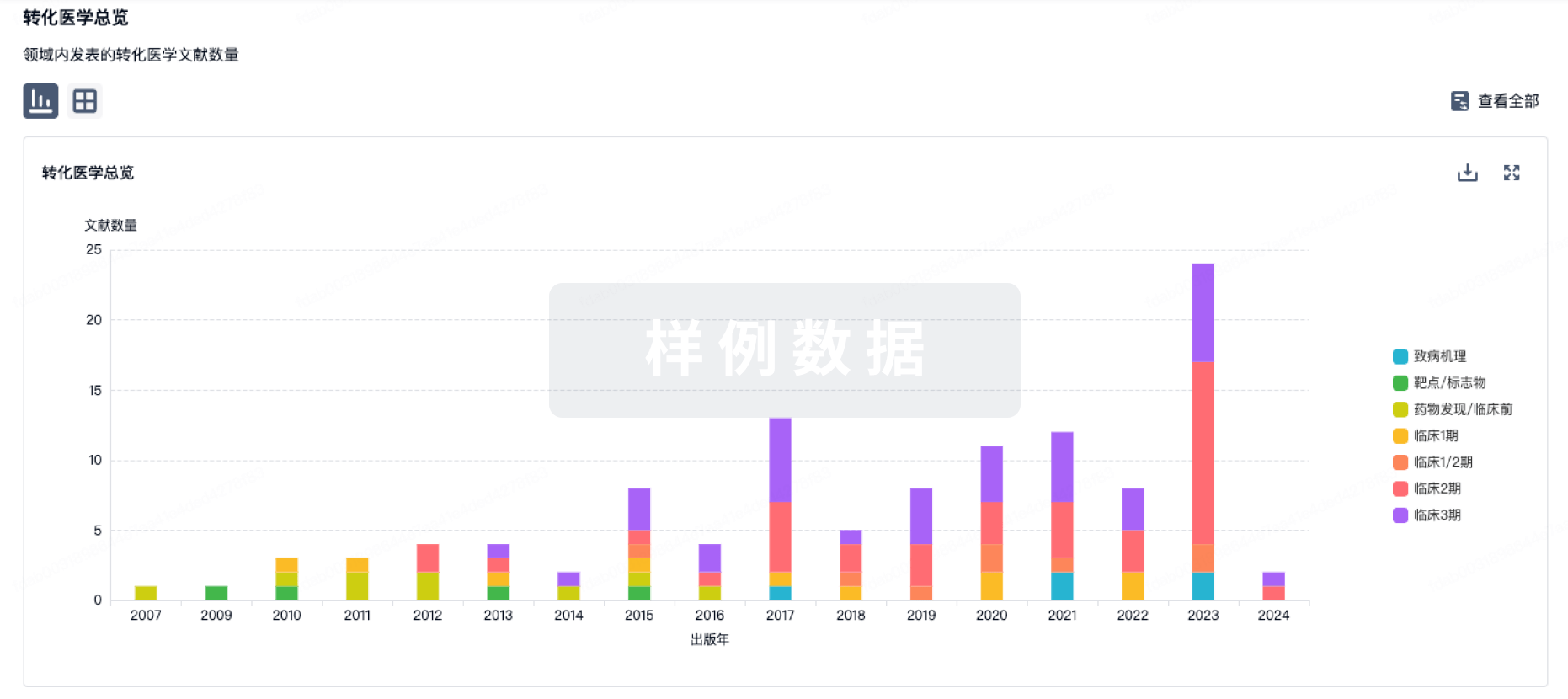
药物交易
使用我们的药物交易数据加速您的研究。
登录
或
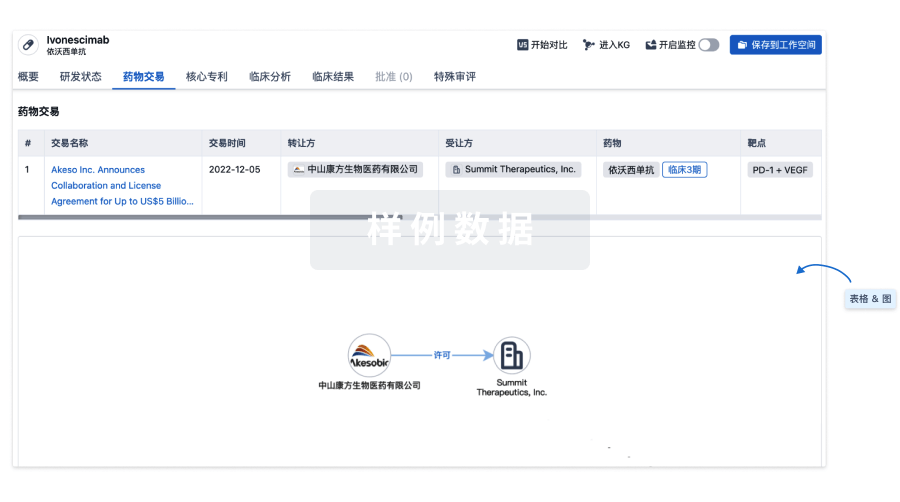
核心专利
使用我们的核心专利数据促进您的研究。
登录
或
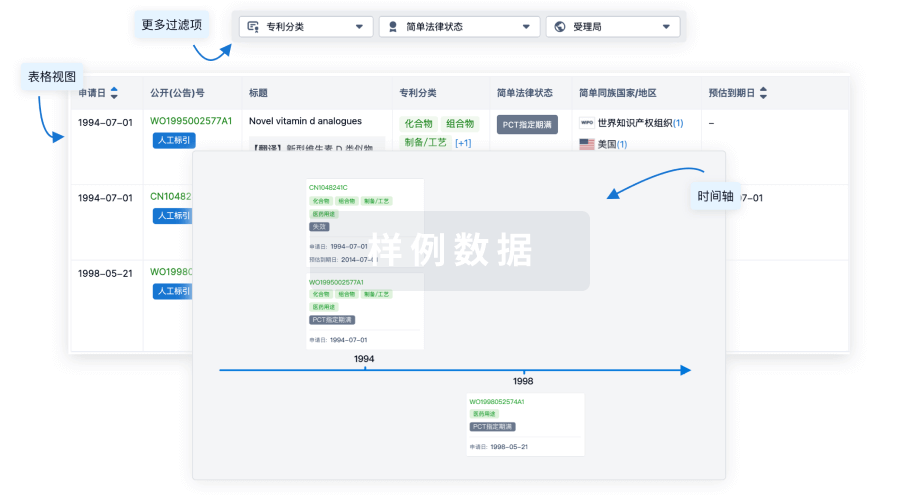
临床分析
紧跟全球注册中心的最新临床试验。
登录
或
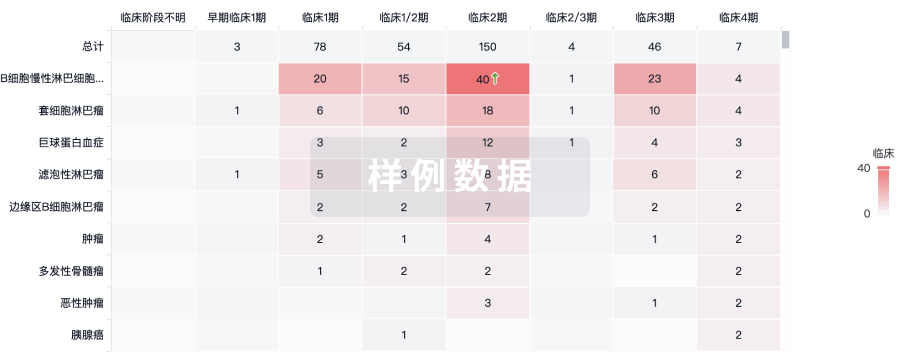
批准
利用最新的监管批准信息加速您的研究。
登录
或
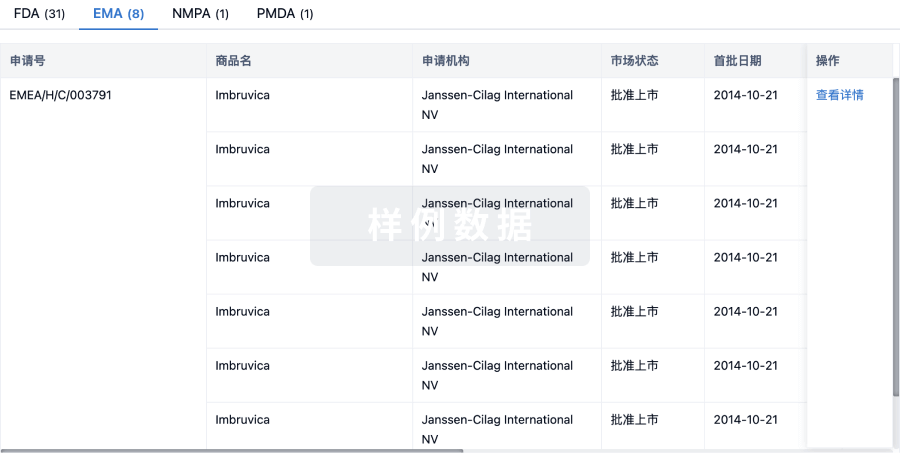
特殊审评
只需点击几下即可了解关键药物信息。
登录
或
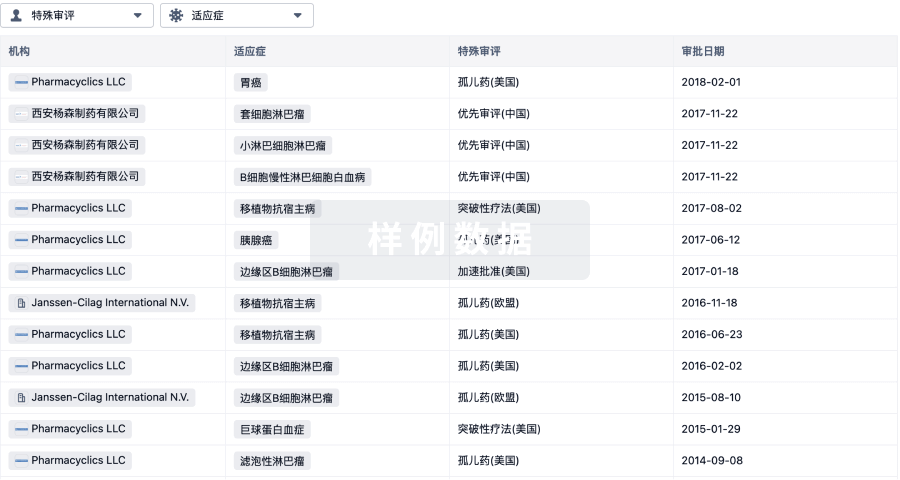
生物医药百科问答
全新生物医药AI Agent 覆盖科研全链路,让突破性发现快人一步
立即开始免费试用!
智慧芽新药情报库是智慧芽专为生命科学人士构建的基于AI的创新药情报平台,助您全方位提升您的研发与决策效率。
立即开始数据试用!
智慧芽新药库数据也通过智慧芽数据服务平台,以API或者数据包形式对外开放,助您更加充分利用智慧芽新药情报信息。
生物序列数据库
生物药研发创新
免费使用
化学结构数据库
小分子化药研发创新
免费使用

